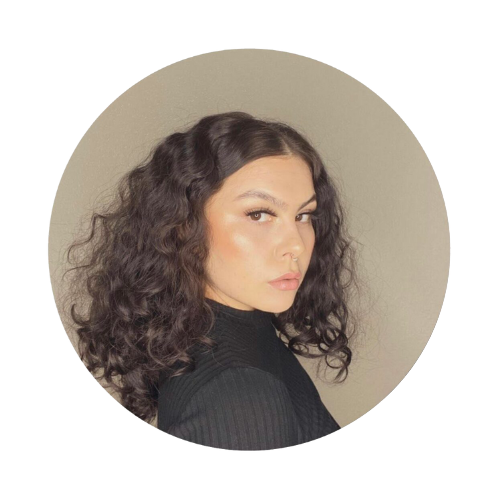The grades of acne can help you to create a treatment plan for your clients.
Acne, medically referred to as Acne Vulgaris, is the most common skin disease in the world! Acne Vulgaris can be triggered by many intrinsic factors, extrinsic factors, environmental factors, and can be hereditary or systemic.
Formation of an acne lesion occurs when the hair follicle is clogged by sebaceous oil, influenced by androgen activity in the skin. That clogged pore can trigger Cutibacterium Acnes and Propionibacterium Acnes to overproduce and allow pustules to form, resulting in what we socially signify as Acne.
4 Grades Of Acne
There are multiple grades of acne leveling the severity of the lesion from a closed comedone to a nodule.
- Grade 1 acne results in open and closed comedones, commonly known as blackheads and whiteheads.
- Grade 2 acne results in papules, or inflamed raised lesions signifying that the hair follicle is now irritated.
- Grade 3 acne results in pustule formation due to a Grade 3 acne lesion accumulating puss creating a pustule.
- Grade 4 acne results in multiple papules or pustules emerging together and creating one large acne lesion in the deeper epidermal or dermal layers, concluding a cyst or nodule. Depending on the characteristics of your client’s acne will determine how you will treat their skin and construct their regimen.

Contribution by Samantha Castro-Naughton
Samantha Castro-Naughton, owner of Samantha Madison Esthetics medical spa, DMK Paramedical Dermal Technician, and Licensed Esthetician specializing in moderate to severe acne and reactive skin disorders. Going on my fourth year of business independently, I focus my practice in holistic + results driven treatments to ensure every part of the body is treated equally. I have a love for biology and physiology, which compliments my genuine love for my career. Located in the Central Valley in California, my spa is where “science meets holistic healing!”
Samantha’s 5 Tips For An Acne Treatment Plan
These are the most important factors that help me construct how I will treat my client and what their skincare journey will look like when treating 1 – 4 grades of acne:
1. Signify the type of lesion you’re treating.
What type of acne are they experiencing? A closed comedone will not be treated the same as a pustule, because they have a different accumulation of matter. A closed comedone is mostly sebaceous oil and dead skin cells. A pustule is mainly bacteria overgrowth. Thus, these have different idealities and will need different active ingredients to properly treat the lesion.
2. Make their journey realistic according to their lifestyle.
A client that works a full-time job and is raising 2 children is not going to have the same amount of free time in the day or desire to apply a 5+ product routine and receive 2+ treatments a month compared to an 18-year-old student who still lives at home. Of course, as a professional who knows your retail like the back of your hand, you may naturally recommend every skincare product you feel will benefit their skin. However, giving someone an extensive regimen and expecting them to come to the clinic more than once a month for treatments is not realistic if it counteracts with their priorities. Giving your client an unrealistic journey will force them to feel overwhelmed, uninspired, and will create major roadblocks in achieving their goal.
3. Make consistency a non-negotiable.
Even the client who has a full schedule needs to stay consistent with their regimen and treatments. Work with your client’s schedule and determine the compromise of how often they should be in the clinic with you and how extensive their regimen should be, so consistency is easily achievable. Explain to your client the importance of consistency, especially if they have experienced this skin concern for a while.
4. Do not sugarcoat the truth.
There is nothing more disappointing than getting your hopes up. Do not promise your client a goal that you know is far-fetched. If your client has experienced their skin concern for multiple months or multiple years, be honest with what is achievable with the tools you have. No esthetician has every tool to treat every skin concern, but we can help them in some way. Whether that is sharing knowledge, as I am to you now, or recommending a skincare product that can treat their concern. This will create a great client-professional relationship and will gain trust because they can see their journey crystal clear. This will also save you a lot of misunderstanding in the future.
5. Progress pictures, baby!
These make all the difference! My clients’ before and after pictures still amaze me today. I have had many clients, still to this day, come in and tell me that they are seeing little to no improvements in their skin. Then, when I show them their first picture taken and tell them to look in the mirror, they cannot believe the progress we’ve made. We are our worst critic, and your client is not subject to that. Sympathize with them and assure them that treating a skin concern takes time. This may also be a great time to make any changes if needed or re-evaluate where you are in your journey together.
Using these tools in your clinic will ensure that you are constructing every skincare journey with all t’s crossed and i’s dotted. Every clients’ journey is different, which is the beauty of skin health. Embrace this and learn from every encounter, it will allow you to grow into the best skincare professional you can be!
References:
Sutaria AH, Masood S, Schlessinger J. Acne Vulgaris. [Updated 2021 Aug 9]. In: StatPearls [Internet]. Treasure Island (FL): StatPearls Publishing; 2021 Jan-. Available from: https://www.ncbi.nlm.nih.gov/books/NBK459173/#
